Lifestyle and your liver:
Aguide to Steatotic Liver Disease previously
known as
non-alcoholic fatty liver disease (NAFLD)
LIVER
NIHR non-commercial partner NORTH
4th Edition | RevisedApril 2024

known as
LIVER
NIHR non-commercial partner NORTH
4th Edition | RevisedApril 2024
The Newcastle uponTyne Hospitals' Steatotic Liver Disease Service is an internationally recognised clinical service dedicated to the diagnosis and management of Steatotic Liver Disease (SLD). Our interdisciplinary team of specialists including doctors, nurses, dietitians and physiotherapists use state of the art techniques and treatments to deliver evidence-based clinical care.
We have produced this booklet to help you understand SLD and the current treatments; it will also allow you to track your progress and achieve your personal goals towards a healthier lifestyle.This booklet provides general advice on lifestyle changes you could consider. If you are unsure whether these changes are suitable for you, please discuss with your doctor or healthcare professional.
Professor QuentinAnstee
Professor Stuart McPherson
Aerobic exercise type of exercise that improves or maintains the fitness of your heart and lungs
ALD
Alcohol-related Liver Disease
Cardiovascular conditions that affect the heart or blood vessels Disease
Cirrhosis irreversible scarring of the liver
Dysfunction abnormality or impairment in the operation of a specified bodily organ or system
Fibrosis thickening or scarring of tissue
Glucose sugar found in the blood that the body uses for energy
Hepatitis inflammation of the liver
MASH
MASL
MASLD
Metabolic-dysfunctionAssociated SteatoHepatitis
Metabolic-dysfunctionAssociated Steatosis
Metabolic-dysfunctionAssociated Steatotic Liver Disease
Metabolic/metabolism processes in the body that convert food into energy
MetALD
Metabolic-dysfunction associatedAlcohol-related Liver Disease
NAFLD Non-Alcoholic Fatty Liver Disease
NASH Non-Alcoholic SteatoHepatitis
Resistance exercise type of exercise that strengthens your muscles
SLD Steatotic Liver Disease
Steatohepatitis accumulation of fat in the liver plus inflammation
Steatotic/steatosis accumulation of fat in the liver

The Liver is a large organ, just under your ribcage on the righthand side of the body. It is the main power plant and factory of your body's metabolism.
What does the liver do?
It handles the nutrients that have been absorbed from food and makes proteins that your body needs. It also helps your body to fight infection.
Steatotic Liver Disease (SLD) is caused by a build-up of fat within the liver. It usually happens in people who are living with any or all of the following conditions:
· overweight or obesity
· diabetes
· high cholesterol
· high blood pressure
Together, these conditions are referred to as the 'Metabolic Syndrome'.
SLD can be subdivided into three broad categories:
1. Metabolic dysfunction-Associated Steatotic Liver Disease (MASLD).
MASLD used to be called Non-Alcoholic Fatty Liver Disease (NAFLD, or fatty liver) and describes the type of SLD that occurs in people with the metabolic syndrome who drink little or no alcohol (fewer than 14 units a week for a woman and fewer than 21 units a week for a man).
2. Metabolic dysfunction-associatedAlcohol-related Liver Disease (MetALD).
MetALD describes the type of SLD that occurs in people with metabolic syndrome who drink more than 14 units but fewer than 35 units (women) and fewer than 42 units (men) of alcohol a week.
3. Alcohol-related Liver Disease (ALD).
Women who drink more than 35 units a week and men who drink more than 42 units a week are considered to haveAlcohol-related Liver Disease (ALD), irrespective of whether they have the metabolic syndrome or not.
MASLD has 4 ' ' from steatosis to severe scarring: steps
Step 1: Metabolic dysfunction-associated steatosis (MASL)
This is the most common of MASLD where excess fat builds form up in the liver (steatosis = accumulation of fat in the liver) but there is no inflammation.
Step 2: Metabolic dysfunction-associated steatohepatitis (MASH)
This is the of MASLD where there is both a build-up of fat form and inflammation in the liver (steatohepatitis = accumulation of fat in the liver plus inflammation). MASH does not necessarily cause any symptoms, so people can feel completely well, but the presence of inflammation in the liver can lead to scarring ( ). step 3
Step 3: MASH with Fibrosis
If inflammation carries on for a long time, then the liver becomes scarred (fibrosis = scarring).This scar tissue replaces some of the healthy liver tissue, however, there is still enough healthy tissue for the liver to function normally and people can feel completely well.
Step 4: MASH-related Cirrhosis
This is the most advanced form of MASLD, where thick bands of scar tissue change the shape of the liver so that it shrinks and becomes lumpy (cirrhosis). When these changes take place, the number of working liver cells is reduced, and the liver can stop working normally.As the number of working liver cells drops, people become increasingly unwell.
People who are overweight or obese, have diabetes, high cholesterol, high blood pressure AND drink alcohol are at the greatest risk of developing cirrhosis due to SLD. This increases the risk of developing liver cancer, internal bleeding and liver failure.
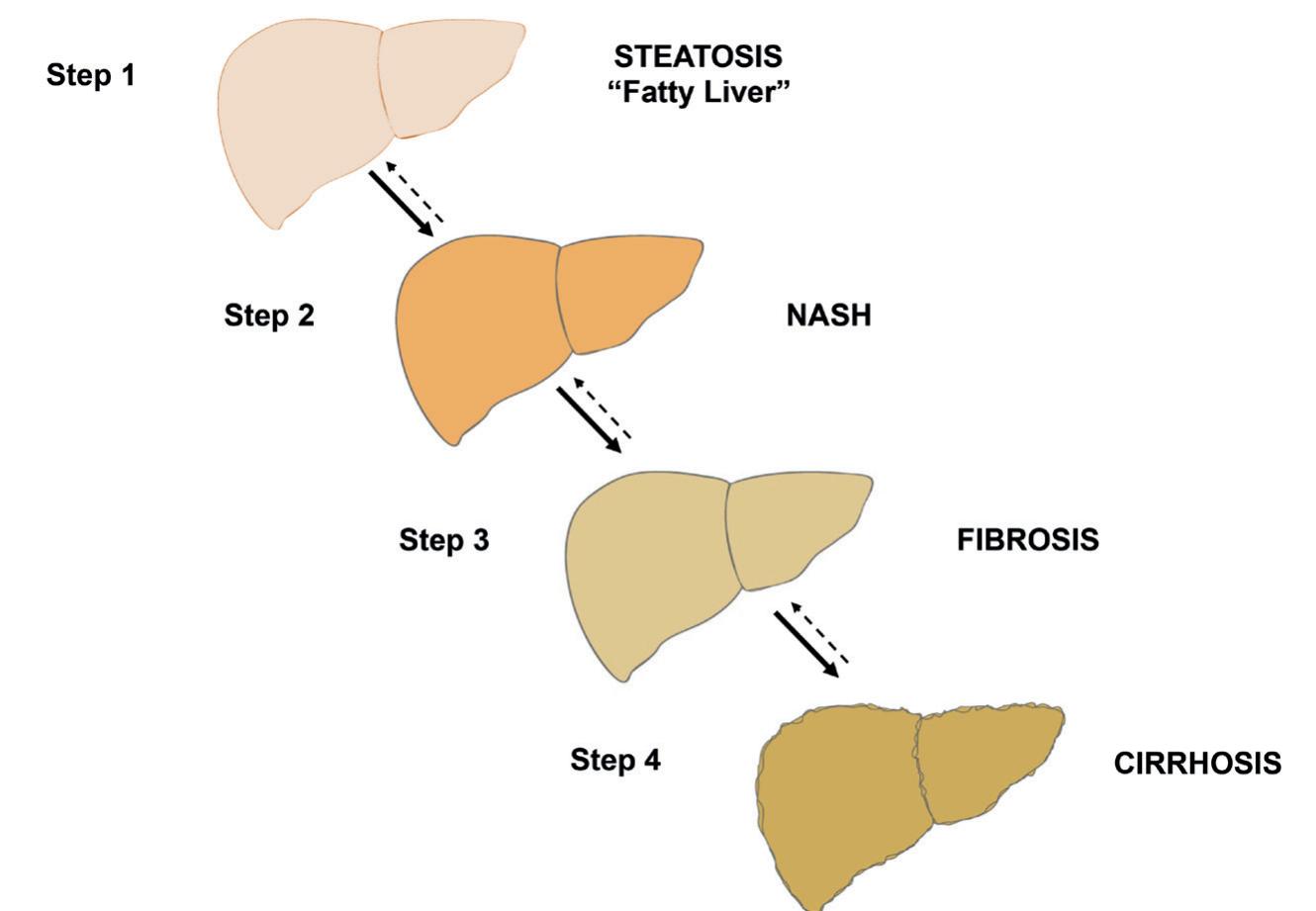
Based on information available so far, we know that in most people with MASLD, the liver remains stable over time. In contrast, people with MASH are at a relatively high risk of worsening liver injury, with approximately 10% developing irreversible liver scarring or cirrhosis over 10 years.
MASLD is not caused by alcohol, although alcohol consumption can worsen the problem. In people with MetALD, the consumption of high levels of alcohol can increase the risk of the liver disease getting worse.
Alcohol should be avoided in both MASLD and MetALD
Cardiovascular Disease
People with SLD have an increased risk of heart attacks and strokes.The team will work with you to help reduce this risk.
Most people with SLD do not have specific symptoms. SLD is often picked up incidentally whilst having blood tests for another reason, such as an NHS Health Check or during tests for other diseases.The liver blood tests are usually abnormal, but not always. Surprisingly, the degree of abnormality of the blood tests does not reliably predict the severity of liver injury.
When someone is suspected of having SLD based on clinical history, examination and blood tests, the next step is to have an ultrasound scan.Asteatotic or 'fatty' liver usually looks brighter than normal on the scan. In the majority of people, a diagnosis of SLD can be made when steatosis of the liver is seen on their ultrasound scan.
Unfortunately, neither the blood tests nor ultrasound scan can reliably distinguish between MASL( ) and more severe step 1 disease with inflammation, MASH ( ) or scarring/cirrhosis step 2 ( 3/4). Other liver conditions may also need to be excluded by step having additional blood tests. In some people it may be necessary to have a sample of liver tissue examined under the microscope. This sample is obtained by liver biopsy.The risk of liver biopsy has to be weighed against the benefits of diagnosing the liver disease accurately. For these reasons physicians currently differ over if and when to perform liver biopsies in people with suspected SLD.
At present there are no specific medicines to treat SLD. The best evidence supports weight reduction, through diet and physical activity/exercise, as the key treatment for MASLD. In people diagnosed with MetALD, the most important thing to do is stop drinking alcohol alongside losing weight. Studies have shown that good blood sugar (glucose) control in people who have diabetes may help the liver to improve.There is also preliminary evidence that treatment with certain anti-diabetic medicines may help reduce the severity of liver damage. People
with high cholesterol should receive treatment to reduce the risk of heart disease and stroke.
Studies are in progress aimed at increasing our understanding of the precise cause of MASH and trials of new drugs based on this increased understanding are currently underway.As a result, it is hoped that in a few years' time we will have better medicines to treat SLD.
In people diagnosed with MASLD and MetALD, alcohol will make the condition worse and it is important that you stop drinking alcohol completely.
MASLD is not caused by alcohol, however, consuming alcohol can make your liver disease worse.Alcohol can contribute significantly to liver damage so reducing alcohol intake or working towards complete abstinence from alcohol is very important to reduce the risk of developing further damage to your liver.
Alcoholic drinks are also high in calories. This is an important consideration when you are trying to lose weight:
The maximum recommended alcohol limit for both men and women is 14 units per week
Data from: Unit and Calorie Calculator | Drinkaware
If you have MASH with scarring of the liver (fibrosis) or cirrhosis, alcohol will make the condition worse and it is important that you stop drinking alcohol completely.
There is good evidence that the most important thing that people with MASLD can do is to reduce body fat and maintain a healthier weight.This is also important for people with MetALD alongside stopping drinking alcohol.This will:
Ÿ Reduce the amount of fat in your liver, helping to reduce inflammation. Even if your liver is scarred there can be some improvement.
Ÿ Lower your risk of stroke and heart attack.
How do I lose weight?
You need to eat and drink fewer calories
And do more physical activity or exercise
This forces your body to use up some of its fat stores and leads to:


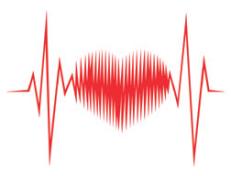
Setting a personal weight loss target
Set a personal weight loss target to help reduce the amount of fat in your liver. Losing 5-10% body weight can stop and sometimes reverse liver damage.
Current weight Target weight
Check what's on offer in terms of weight management support locally - speak to your liver team, GPor practice nurse.
The NHS Choices 'Losing weight: Getting started' guide promotes safe and sustainable weight loss: https://www.nhs.uk/live-well/healthy-weight/
Awell-balanced and healthy diet is essential for all of categories SLD. Reducing your calorie intake together with healthy food, snack and drink choices can help you to lose weight.
We recommend that you avoid uncontrolled 'crash' diets as they can worsen liver function and are not sustainable in the longer term.
Calorie counting can work for some people, however, making practical changes to your diet can be just as effective.
Consider the tips below to reduce the calories in your diet:
· Plan your meals for the week, only buy the foods you need for those meals and avoid having foods high in fat, salt and sugar in the house or where you work.
· Eat three balanced meals per day at planned times.Avoid snacks unless you are physically hungry.
· Reduce the amount of starchy foods, meat and fat on your plate but increase the amount of vegetables/salad.
· Fill half your plate with vegetables/salad, a quarter of your plate with lean meat, fish, egg, tofu, Quorn or beans and a quarter with starchy foods like potatoes, wholegrain rice, chapatti, yam, wholegrain pasta or wholegrain bread.
· Eat your meal at a table or a quiet space if you can and avoid distractions like watchingTV, working or reading. Eat slowly, focus on the taste of the food and enjoy it to the full.
· Monitor your portion sizes to avoid overeating.The section below and on the following pages shows recommended portion sizes for some common foods.
Portion sizes (1oz equivalent to 25-30g)
Oils and spreads
• Use olive oils and spreads each day (drizzle or spray)
Fruit and vegetables
(1 portion is 80g or a handful)
• Asmall dessert bowl of mixed salad
• 6 cherry tomatoes or 1 large tomato
• 3 heaped tablespoons of peas, carrots, sweetcorn, tinned tomatoes
• 1 leek or onion
• 3 florets of broccoli or cauliflower
• 2 ladles of vegetable soup
• 1 medium apple, orange, pear, banana, peach
• 2 smaller fruits such as kiwi, satsuma, plums
• Palm full of grapes, cherries, strawberries
• 1 slice of a large fruit such as pineapple or melon
• 3 tablespoons of tinned fruit in natural juice
• 1 tablespoon of dried fruit e.g. raisins, apricots
• 1 small glass of fruit juice (150ml)
Nuts, seeds and olives
• 30g plain nuts include almonds, brazils, cashew, walnuts
• 30g seeds include pumpkin, sunflower and linseed
• 12 (30g) olives
Potatoes, bread, rice, pasta and other starchy carbohydrates (an average serving at each meal)
• 2 slices medium wholegrain bread
• 1 large pitta bread, chapatti, muffin or tortilla wrap
• 1 medium bread roll
• 2 crumpets
• 4 crackers, crisp breads or oatcakes
• 6 tablespoons of uncooked oats (½ teacup)
• 6 tablespoons of wholegrain breakfast cereal
• 2 cereal biscuit e.g. Weetabix or Shredded Wheat
• 2 tablespoons unsweetened muesli
• 6 tablespoons of cooked rice, pasta, couscous or noodles
• 4 egg size potatoes or 1 medium jacket or sweet potato
Beans, pulses, fish, eggs, meat and other proteins
• 3 tablespoons (120g) or ½ large tin of baked beans, chick peas, haricot, cannellini or kidney beans
• 50g dried weight lentils
• 80-100g lean red or white meat the size of a computer mouse
• 100-140g fish
• 100g Quorn
• 150g tofu
• 2 medium eggs
• 50g processed meat
Dairy and alternatives
• 200ml of semi-skimmed or skimmed milk
• Small pot (125g) of yoghurt or fromage frais (preferably natural or low fat, low sugar)
• Asmall piece of cheese, 30g, about 2.5cm/1" cube (preferably goat or sheep varieties)
• 150g pot of cottage cheese
For some, tracking the calories eaten through the day and aiming for a target can be an effective way to lose weight.Adaily calorie allowance of 1,900kcal for most men and 1,400kcal for most women will lead to weight loss.
To manage hunger, it can be helpful to spread the consumption of calories evenly across the day.
There are different options to track calorie consumption:
¨ Write down all the food you eat in a food diary and add up the calories as you go (see page 22 for advice on how to keep a food diary).
¨ Use a Smartphone app, some examples available at time of publishing are: Nutracheck, MyFitnessPal, NHS Food Scanner app.
It's a good idea to get used to reading nutrition labels on packaged food and drinks. Choosing options lower in calories, fat, sugar and salt is often healthier for people with SLD.
Many packaged foods now have a traffic light label on the front of the packaging:
Each serving (150g) contains of an adult’s reference intake Typical values (as sold) per 100g: 697kJ/ 167kcal
example image from https://www.food.gov.uk/safety-hygiene/check-the-label
· means high red · means medium amber · means low green
Try to choose foods with more greens and ambers and fewer reds.
For foods with red traffic lights try to eat them less regularly and in smaller amounts.
For further information visit: https://www.nhs.uk/live-well/eat-well/food-guidelines-andfood-labels/how-to-read-food-labels/
The Mediterranean Diet has proven health benefits including a healthier heart, a longer lifespan and good weight management. It may also help stop or reverse liver damage. For people with SLD, this diet has the most evidence of benefit although it is not the only healthy way of eating and other diets may be of benefit to some people.
Move towards a way of eating that contains:
MORE home-prepared options, plant-based foods (cereals, fruits, vegetables, beans and pulses), fish and seafood with olive oil as the main source of added fat.
LESS processed foods, red meats, foods high in saturated fat and/or sugar.
Pastries, cakes, biscuits and sugar-sweetened drinks should NOT be consumed frequently and left only for special occasions.
Every main meal
Ÿ One serving of starchy carbohydrate foods: cereal, porridge, wholegrain bread, potatoes, pasta, rice or couscous.
Ÿ One portion of fruit.
Ÿ Two or more portions of vegetables.
Ÿ Olive oil for cooking or as a salad dressing.
Every day
Ÿ Eat breakfast.
Ÿ Two portions of low-fat milk, cheese or yoghurt.
Ÿ Use fragrant herbs/spices/garlic/onions instead of salt for flavour.
Ÿ 30g of olives/nuts/seeds as a snack or in a meal.
Ÿ Drink at least 6-8 glasses of fluid (water or sugar-free drinks including tea and coffee all count).
Ÿ Three or more portions of legumes (beans, peas or lentils).
Ÿ Three or more portions of fish (one to be oily fish).
Ÿ Two portions of white meat (chicken, turkey).
Ÿ Less than two portions of red meat (beef, lamb, pork).
Ÿ No more than one portion of processed meat (ham, bacon and sausages).
What's the difference between physical activity and exercise?
Physical activity is any body movement that requires you to use more energy than resting, and it incorporates many of the activities carried out as part of the daily routine.
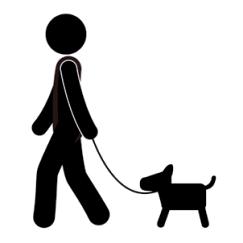



Exercise is a subcategory of physical activity in which planned, structured and repetitive movements are performed to maintain or improve fitness, e.g. cycling, swimming, lifting weights and dancing.




How can physical activity/exercise benefit my liver?
Ÿ Exercise has been shown to decrease liver fat.
Ÿ Exercise can reduce whole body fat and increase muscle mass.
Ÿ Exercise can increase the body's ability to burn fat.
Ÿ Exercise can improve the way your body handles glucose (sugar).
Ÿ Physical activity/exercise can help you to lose weight alongside changes in your diet.
Importantly: physical activity/exercise can help you to maintain weight loss in the long term.
How can physical activity/exercise improve my general health?
Ÿ Stronger muscles and bones.
Ÿ Improved fitness of heart and lungs.
Ÿ Reduced blood pressure.
Ÿ Improved blood glucose (sugar) control.
Ÿ Improved mood.
Ÿ Higher energy levels.
Ÿ Improved sleep patterns.
Ÿ Improved esteem and self confidence.
How much physical activity do I need to do?
Public Health guidelines promote at least 150 minutes of moderate intensity aerobic exercise each week and strengthening exercises on at least 2 days each week.
Moderate intensity activity should:
Ÿ Raise your heart rate.
Ÿ Make you breathe faster and harder.
Ÿ Make you feel warmer.
Ÿ Leave you able to talk but not able to sing.
Moderate intensity is NOTjust going to the gym, running or an exercise class - although these would be included. It could include brisk walking, vigorous housework or heavy gardening.
This can be broken down into 10-minute bouts if this is more manageable. It is important to set yourself an achievable goal and try to gradually build up to this.
Remember:
Every minute counts. Some is good. More is better!
Aerobic (or 'cardio' e.g. jogging, swimming, walking) and resistance (or 'strength' e.g. weight training) exercise have both proved beneficial in reducing liver fat and improving liver health.A combination of both types of exercise is likely to have the greatest effect in the longer term.
Ideas for increasing your physical activity levels
Walk for part of the route to work (for example, get off the bus 1 stop earlier).
Break up sitting time by standing up & walking for at least 2 minutes every hour.
Take the stairs instead of the lift.





Walk the dog at least once a day.
Join a walking group.
Try a new exercise class.
Do some gardening or mow the lawn.
Lots of short bouts of physical activity can be just as good for you as long periods of activity - the more you do overall throughout the day, the better!
Walking is a good place to start and has been linked with a number of health benefits:



Ÿ Walking can strengthen your heart, bones and muscles and also help with weight loss.
Ÿ Walking is easy on the joints.
Ÿ Walking reduces anxiety and depression and can improve mood.
Ÿ If you walk as part of a walking group, it can be a great way to socialise.
Ÿ Best of all - it's free!
Guidelines recommend 10,000 steps a day.You can use a pedometer or app on your phone to track your step count - try to build your daily step count up gradually. There is an example of a StepTracker on page 2 that will allow you to track your step 5 count.
No matter how slow you move, you are still moving faster than a person who is sitting down!
How much physical activity does it take to burn off calories?
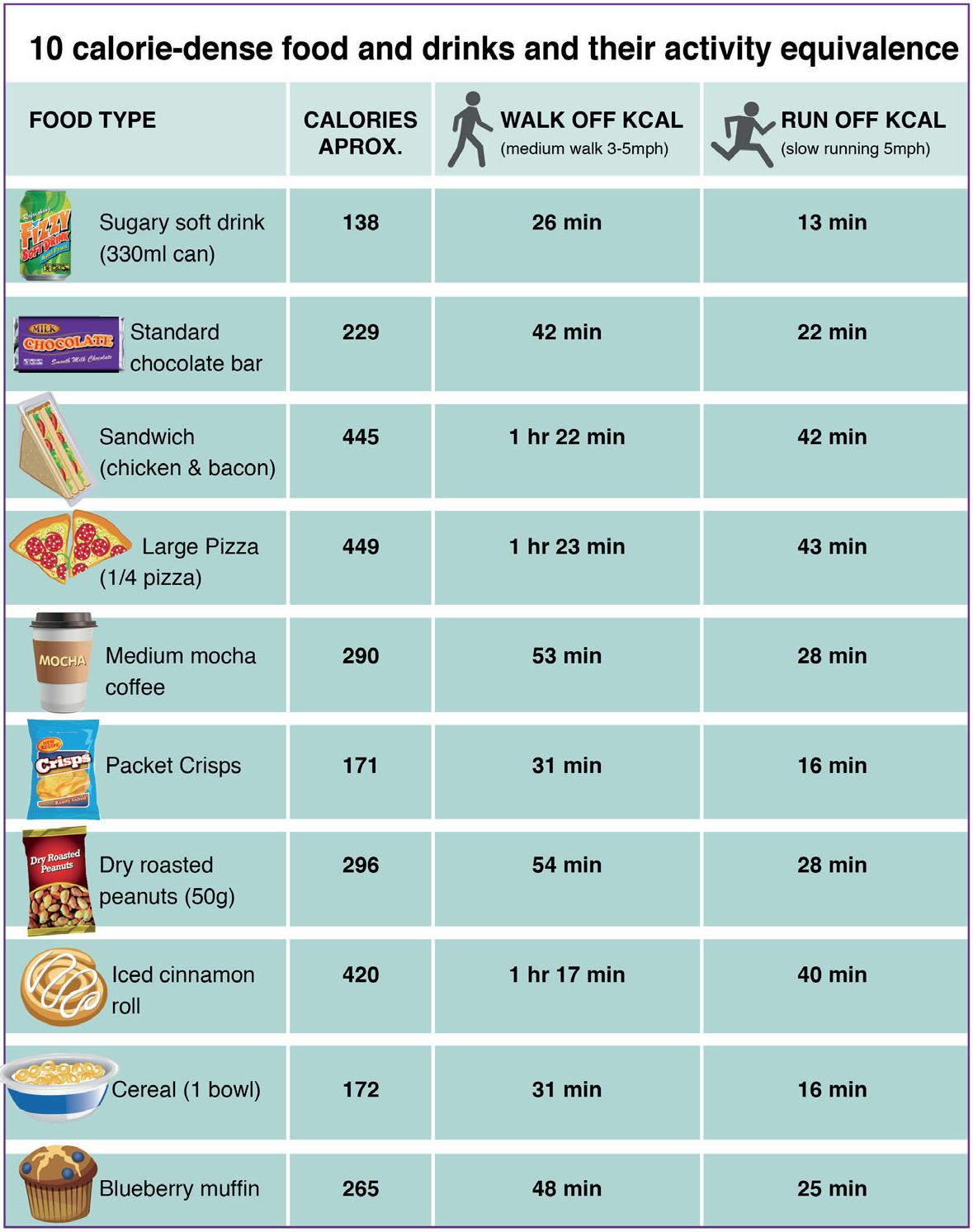
Ÿ Think about your reasons for making changes and what you hope to achieve.
Ÿ Action Plan: How are you going to achieve this? What am I going to change? Where am I going to do it? When will I fit it into my week? Why am I making the change? Who is going to support me?
Ÿ Set SMART goals (Specific Measurable Achievable Relevant Timely)
Examples:
To lose 0.5kg to 1kg in weight per week for the next 3 months.
To eat 5 portions of fruit and vegetables at least 5 days per week for the next month.
To walk 5,000 steps every day for the next two weeks.
Ÿ How are you going to measure your progress? (There are tools at the end of this booklet that you may find useful to help you to track your progress).
Ÿ Barrier identification: What might delay or prevent your progress?
You may find it useful to measure your weight at home each week to track your progress
Keeping a diary of everything you eat and drink can have many benefits. It may help you to:
Ÿ Work out what changes you could make to your diet.
Ÿ Help you to understand patterns in your eating that you may not have noticed before.
Ÿ Compare what you eat during the week compared to weekends, particularly if you have a different routine.
Ÿ Count the calories you eat in a day or week.
Think about writing down:
Ÿ The day of the week.
Ÿ The time of day/meal.
Ÿ What you ate/drank and how much? (be as specific as you can with the portion size)
You could also include some or all of the following:
Ÿ The calories in the food you ate.
Ÿ Where you were? (e.g. at home, in a café, at friends)
Ÿ How you were feeling? (this may help you to identify whether certain emotions trigger you to eat similar foods)
To help you reach the S.M.A.R.T. goals you've set, try to spend a bit of �me thinking about what meals you are going to eat over the next few days or during the week.
Use the space below to plan your meals and then make a shopping list based on this - checking what you already have in your cupboards and freezer so you only buy what you need!
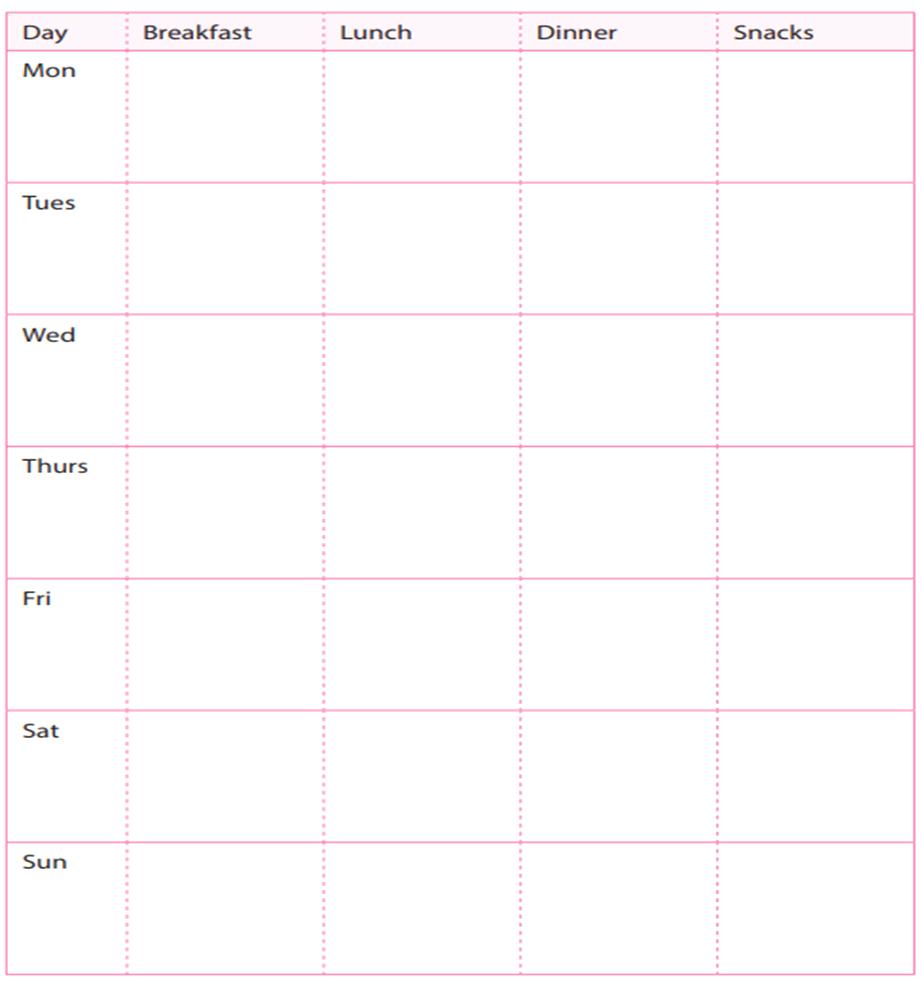
Aphysical activity planner can be useful for setting goals and recording your activity.
Day Activity Goal Minutes / steps / other When?Where?Who Achieved Minutes / steps / other with? How long for?
Mon Tues
Wed Thu Fri Sat Sun
This can be helpful for monitoring your progress when trying to increase your step count and day-to-day physical activity levels.
DAY 1 DAY 2 DAY 3 DAY 4 DAY 5 DAY 6 DAY 7 1,500 4,000 6,000 8,000 10,000 Steps 12,000 2,000 1,000 3,000 2,500 3,500 5,000 4,500 5,500 7,000 6,500 7,500 9,000 8,500 9,500 11,000 10,500 11,500
use this page for your own notes
1. Liver Patient Support
2. Accommodation for patients & families
3. Autoimmune Hepatitis
4. Alcohol and Liver Disease
5. LookingAfterYour Liver
6. Primary Biliary Cholangitis (PBC)
7. Coping With Stress
8. Primary Liver Cancer
9. You andYour Consultant
10. Primary Sclerosing Cholangitis (PSC)
11. Lifestyle and your Liver (a Guide to Steotatic Liver Disease)
12. Liver Disease
13. Skin Care for Liver Patients
14. Diet and Liver Disease
14a. Nutrition in Liver Disease
15. Hepatitis C
16. Travel Insurance for Liver Patients
17. Hepatitis E
18. Fatigue in Liver Patients/APatient’s Journey
19. Scanning - a short guide
20. Liver Cirrhosis Self ManagementToolkit *
21. Exercise & Osteoporosis in Liver Patients
22. Hepatic Encephalopathy
23 Our Livers, Our Lives (only via ISSUU)
25 Allowances (DLA& PIP)
30 Wellness Walks - several available * only from your doctor or healthcare professional
LIVErNORTH information leaflets from:
1. ISSUU: https://issuu.com/livernorth
2. Collect from our display boards: (Various Hospitals & Clinics)
3. Email us: info@livernorth.org.uk
4. Phone/FAX: 0191 3702961
5. Write to us: Freepost LIVERNORTH
(no postage stamp necessary)
6. Facebook message us: https://www.facebook.com/livernorth/
This booklet was prepared by:
Professor QuentinAnstee, Consultant Hepatologist, Freeman Hospital/Newcastle University
Professor Stuart McPherson, Consultant Hepatologist, Freeman Hospital/Newcastle University
Mr Thomas Crame, Registered Dietitian, Freeman Hospital
Dr Kate Hallsworth, ConsultantAHP, Freeman Hospital/Newcastle University
The NIHR Newcastle BRC Liver Theme NHS Choices
LIVErNORTH National Liver Patient Support Charity
This leaflet is for information only. Professional, medical or other advice should be obtained before acting on anything contained in this leaflet. LIVErNORTH and the authors can accept no responsibility as a result of action taken or not taken because of the contents.
All authors granted permission for images to be used within this leaflet: Paul Brown, Medical Illustration, LTHT(LeedsTeaching Hospitals FoundationTrust)
John Bedlington, LIVErNORTH
Matt Keracher, Royal Society for Public Health (calorie and activity equivalence table)